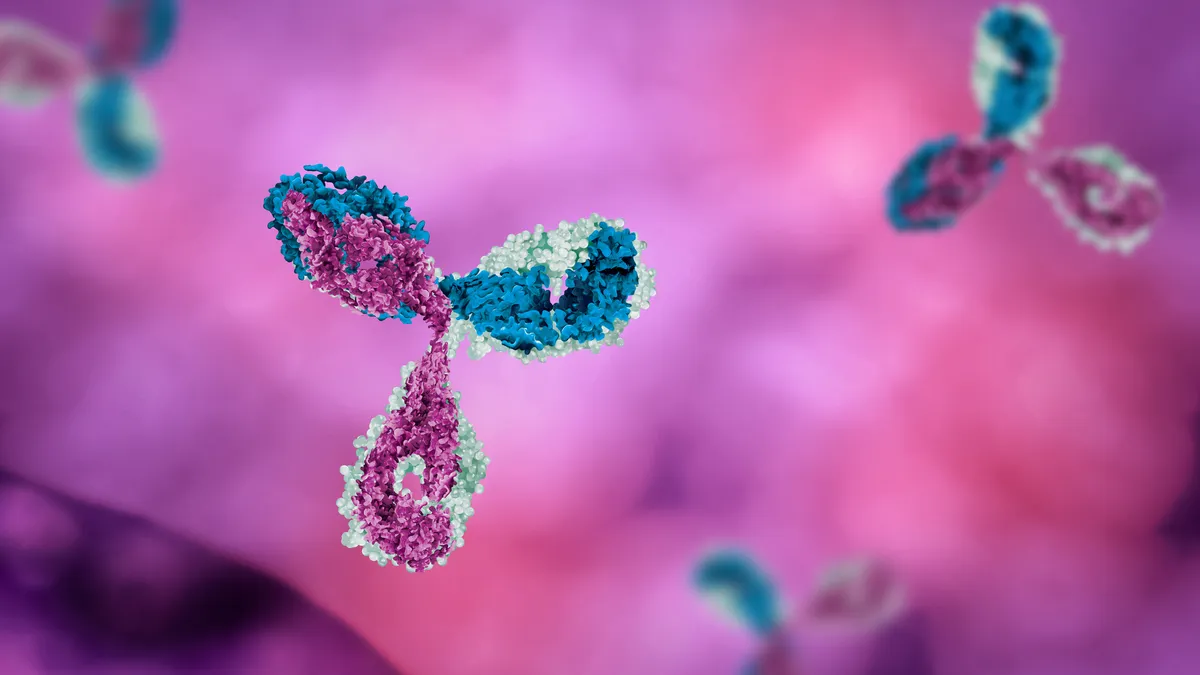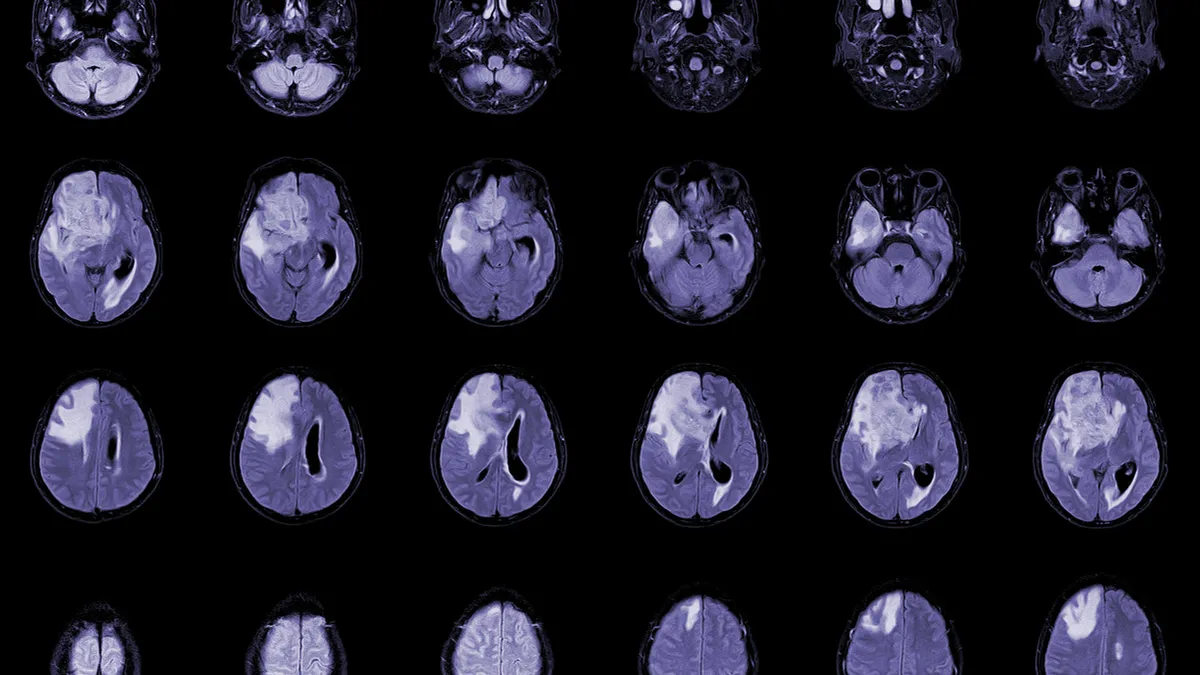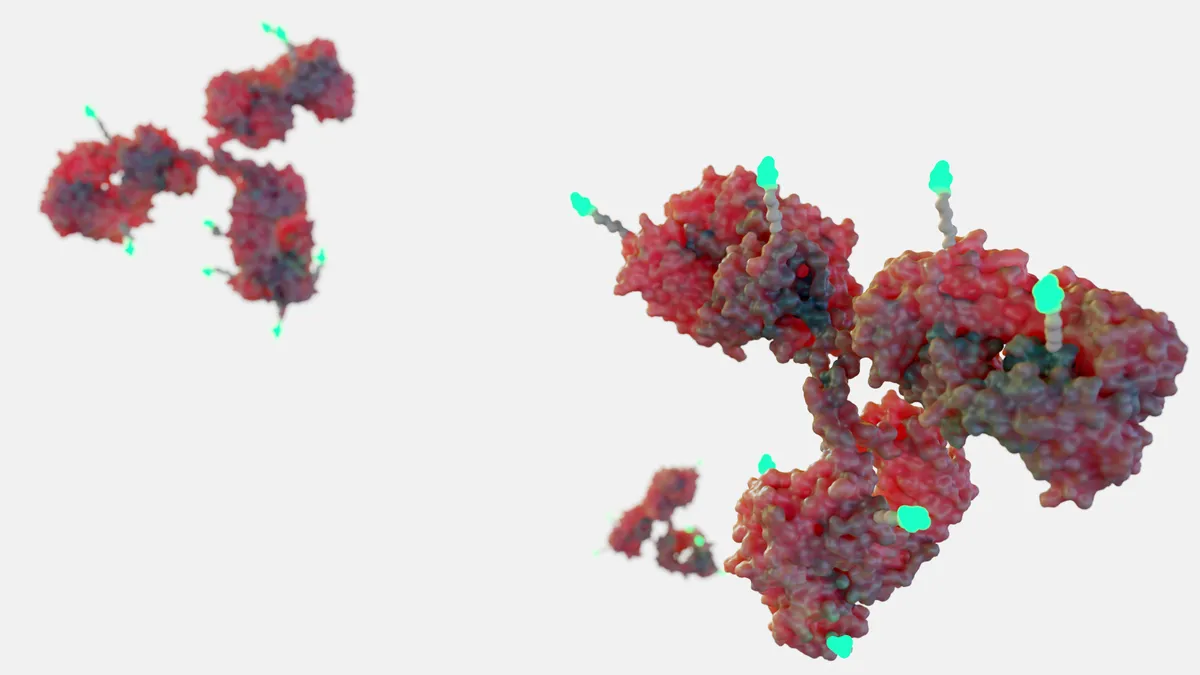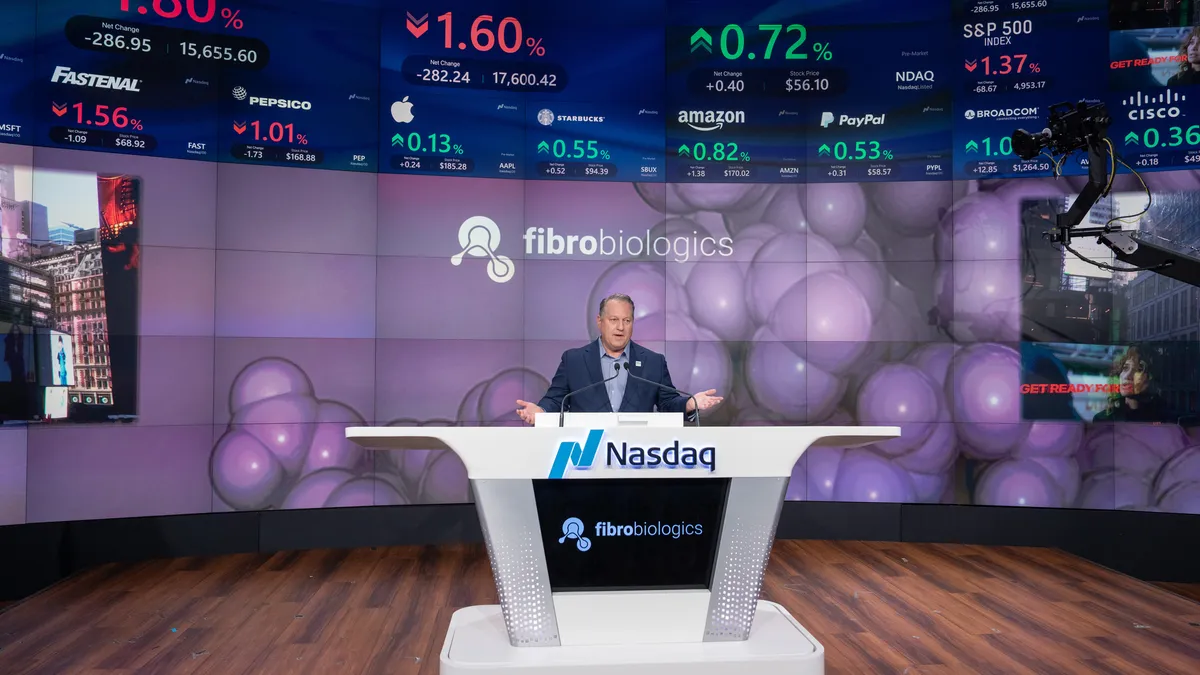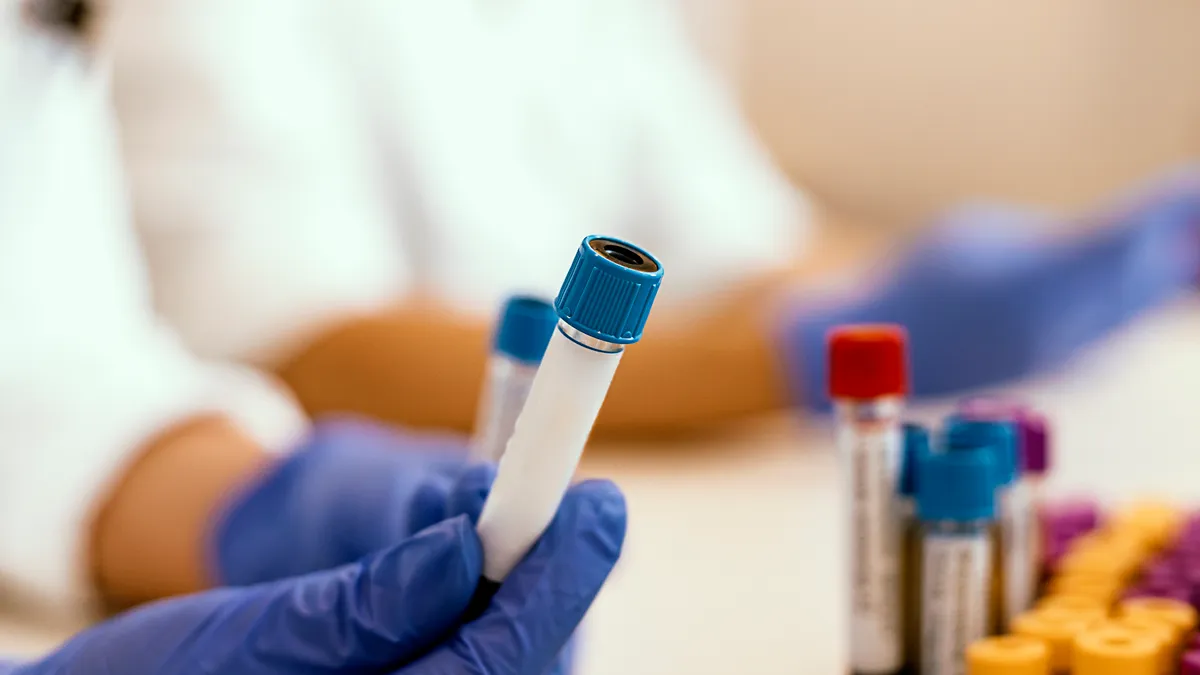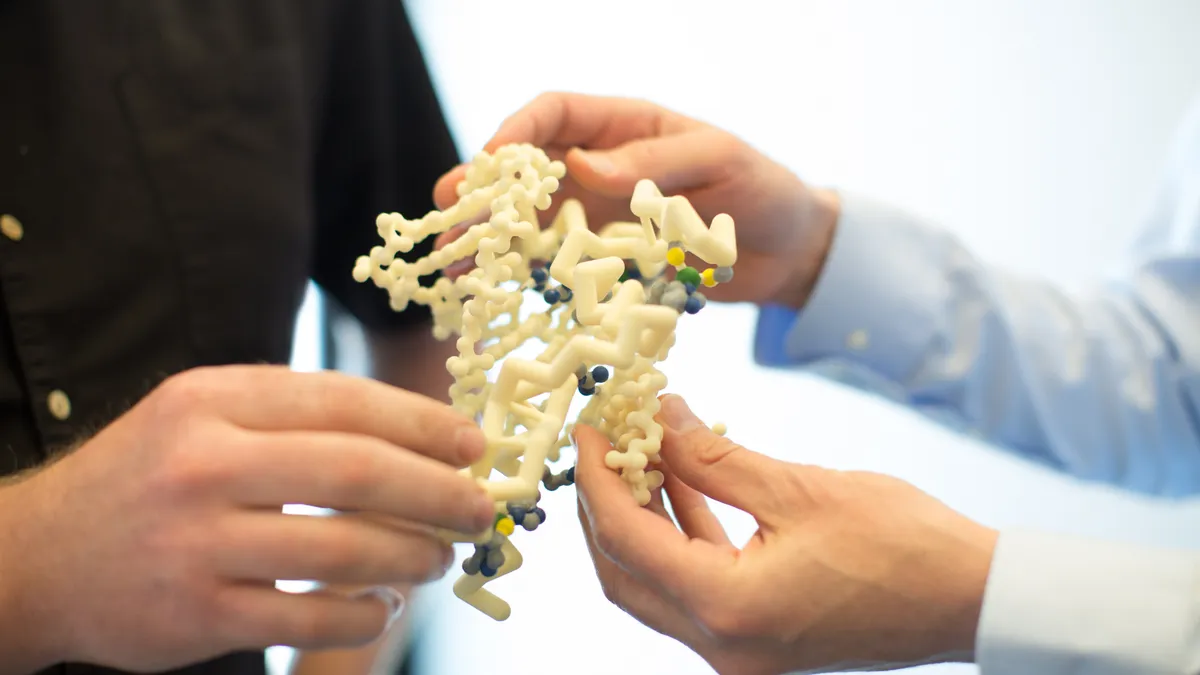Welcome to today’s Biotech Spotlight, a series featuring companies creating breakthrough technologies and products. Today, we’re looking at Gain Therapeutics, a biotech developing an early-stage Parkinson’s disease treatment while welcoming new executives to the C-suite.

The financing landscape for early-stage biotechs is still fraught with risk, even ones with promising science in fields with unmet medical need. Maryland’s Gain Therapeutics, which has a lead candidate designed to address the root causes of Parkinson’s disease, has had to navigate those troubled waters as it awaits results for a phase 1 trial by the end of the third quarter.
Perhaps some fresh faces in the C-suite can make the difference for Gain. In the first half of the year, the company welcomed a new interim CEO and chief medical officer, all while pricing an $11 million public offering and taking an unconventional approach to Parkinson’s disease by addressing a genetic mutation thought to lead to a loss of motor function in patients with the disease.
Earlier this year, the company showed results from a preclinical study in which mice demonstrated better cognitive function than those that did not receive Gain’s treatment, called GT-02287, that targets an enzyme encoded by the mutation of the GBA-1 gene. The company is also getting ready to unveil phase 1 results showing safety and tolerability in healthy volunteers before moving onto a mid-stage study in Parkinson’s patients.
"The biology is quite complex, and a lot of efforts are on the hallmark protein of Parkinson’s called alpha-synuclein — but there have been some failures, and that’s where other approaches like GBA-1 come in."

Dr. Jonas Hannestad
Chief medical officer, Gain Therapeutics
In an interview with PharmaVoice, Dr. Jonas Hannestad, Gain’s chief medical officer who joined the company in April, discussed how the biotech is embracing a new, disease-modifying approach to difficult neurodegenerative diseases, embracing an industry that is more scientifically collaborative than ever before and steering through a challenging biotech financing environment with a focus on groundbreaking science.
PHARMAVOICE: Gain has had a lot of executive turnover, and you’re relatively new to the company as well. How does that turnover, as well as some financial hurdles, affect what you do on the clinical side of the company?
DR. JONAS HANNESTAD: With the departure of the previous CEO, that’s always disruptive. But some of the board members who have experience running companies are now more involved in the day-to-day, and that is very helpful. They’re helping not just the interim CEO, but also me and my team on the clinical development side — it’s a silver lining.
When it comes to the financial aspects, small biotech companies, whether private or public, it’s always a challenge to have enough money and resources to do the clinical development you ideally want to do compared to a big company. But that’s something I’m familiar with because it’s been the same issue at many small companies. You have to spend much more time making sure the trial you design is optimal so that you spend as little money as possible and as little time as possible while at the same time getting the key results you need.
Is that a more difficult line to walk these days for small biotechs than it used to be?
I definitely think so. Where I was before Gain ran very low on money in late 2022, and that was one of the waves when a lot of companies struggled — but then there were some [biotechs] that had enough funding to keep going. The financing environment hasn’t improved much in biotech, and companies are still collapsing because they just can’t get additional financing. It’s challenging and hasn’t really improved from what I can tell.
Can you tell me about GT-02287 and how it became a candidate for Parkinson’s?
Among the people with a genetic risk factor for Parkinson’s, the most common is a GBA-1 mutation, which increases risk of developing the disease by about three- to five-fold. And it is a more severe type that progresses more quickly with a higher prevalence of cognitive impairment. Gain has a computational platform to model structure of proteins what we think are useful targets and figure out how small molecules can bind to these proteins and have a benefit in disease. For GT-02287, the idea was finding a molecule that could bind to the enzyme encoded by GBA-1. We just completed the phase 1 study, and it appears to be safe and well-tolerated in healthy volunteers, so we’re moving into a study in patients in the near future.
How would you characterize the overall state of Parkinson’s research and why it’s an important field to be in at the moment?
Parkinson’s is the second-most prevalent neurodegenerative disease after Alzheimer’s and affects about a million people in the U.S. alone. While there are many treatments approved for Parkinson’s they’re all symptomatic, so they work well in early disease when patients are newly diagnosed and start having symptoms, and they work for several years. But then as the underlying disease progresses, these treatments start losing their efficacy, and people become more symptomatic, more disabled and eventually lose their independence.
Most of the efforts now for the last five to 10 years have been to find disease-modifying treatments. Why hasn’t anyone cracked that? The biology is quite complex, and a lot of efforts are on the hallmark protein of Parkinson’s called alpha-synuclein — but there have been some failures, and that’s where other approaches like GBA-1 come in.
There has been a turning point in disease-modifying treatments for Alzheimer’s disease after so many years of symptomatic medicines. What led to that inflection? Is it on the horizon for Parkinson’s?
I’ve spent most of my career working on the three big neurodegenerative diseases — Alzheimer’s, Parkinson’s and ALS — and there are a lot of commonalities. What has really changed is our understanding of the genetics, revealing their causes, but also the specific pathways that are abnormal in the cell. In Alzheimer’s, a lot of genetic hints point to neuro-inflammation, and companies have targeted those pathways. In Parkinson’s, a lot of the mutations are in mitochondrial function, and that’s where GBA-1 points to, not just an enzyme encoded by this gene, but a variety of pathways that are affected and probably positive in Parkinson’s.
Where does GT-02287 stand among other Parkinson’s treatments in the works?
A lot of the effort currently is on monoclonal antibodies targeting alpha-synuclein — the lead example is Roche’s ongoing program, and Biogen and AbbVie had one each, but they stopped development. So the jury is still out on alpha-synuclein.
In terms of GBA-1, there are two other companies in the space. There’s Bial, a Portuguese company in phase 2, and there’s Vanqua out of Chicago, and they’re currently in phase 1. From what we can tell their molecules activate the enzyme directly, but that’s just part of the story because the mutation causes misfolding inside the cell, which leads to stress. What we’ve shown with our molecule, when it binds to the enzyme, it reduces the propensity to misfold. So we think that’s what will set the Gain program apart.
The Michael J. Fox Foundation is a funder of your work. Does that connect you with a shared knowledge network among companies and researchers working in the space?
That’s something that has really changed in the last 10 or so years, that companies are willing to have these pre-competitive discussions. Without sharing details of their molecule, they share about running trials, identifying patients and those things. I was at a Michael J. Fox Foundation meeting about a month and a half ago in Washington, D.C., and they brought together representatives from pharmaceutical companies in the Parkinson’s space to discuss new diagnostic frameworks, and that’s a good example of stakeholders finding common ground.





















